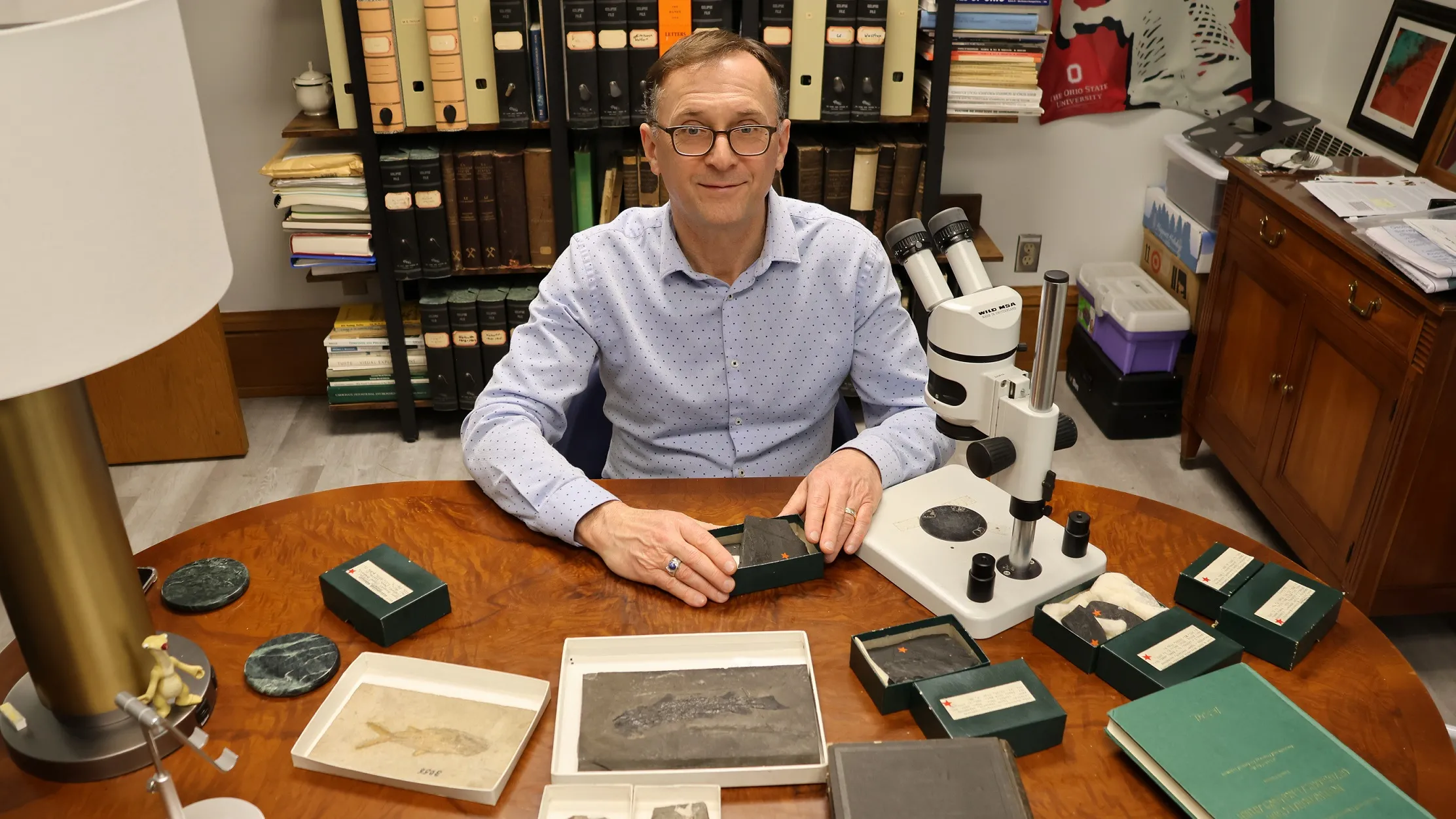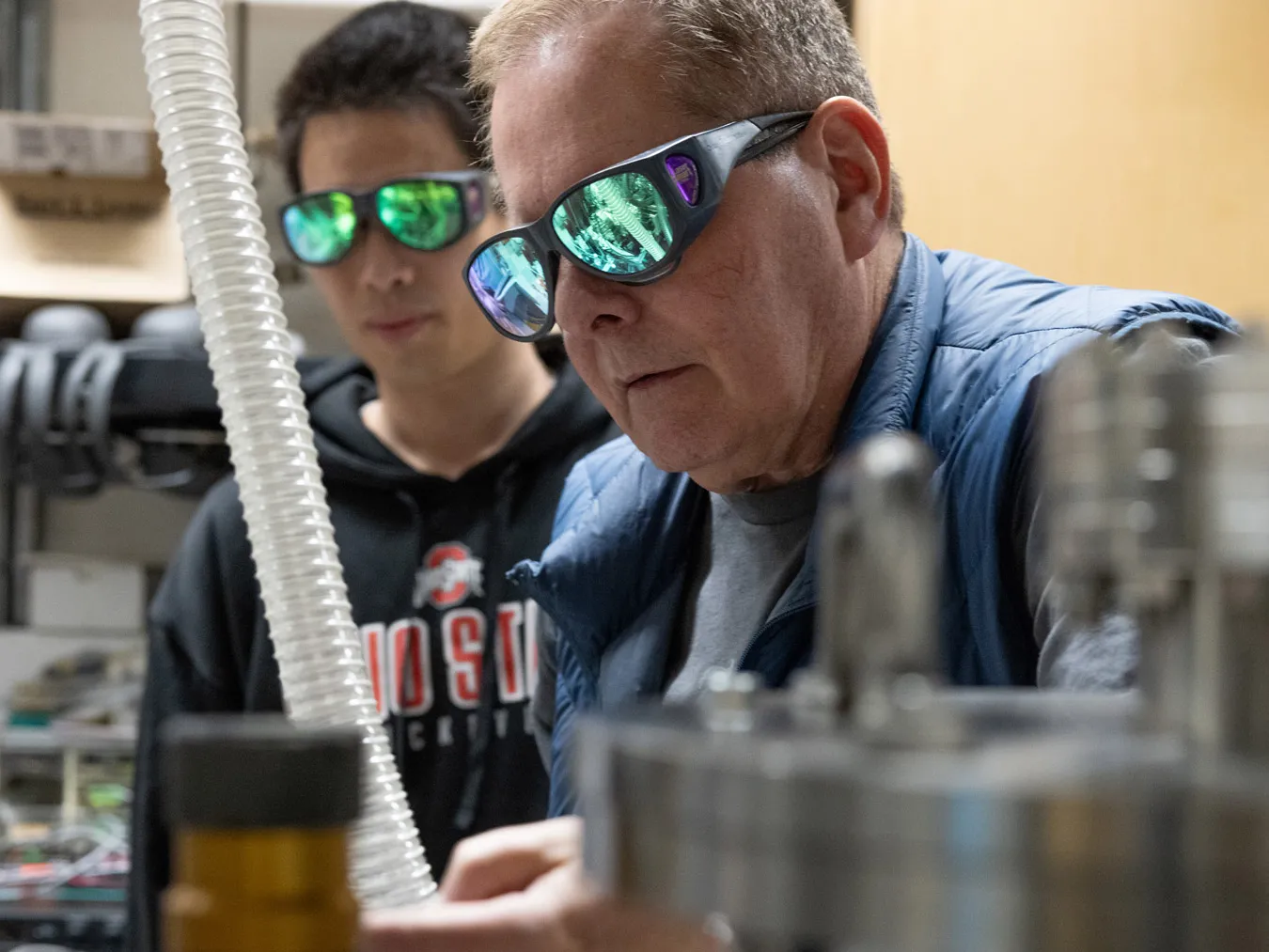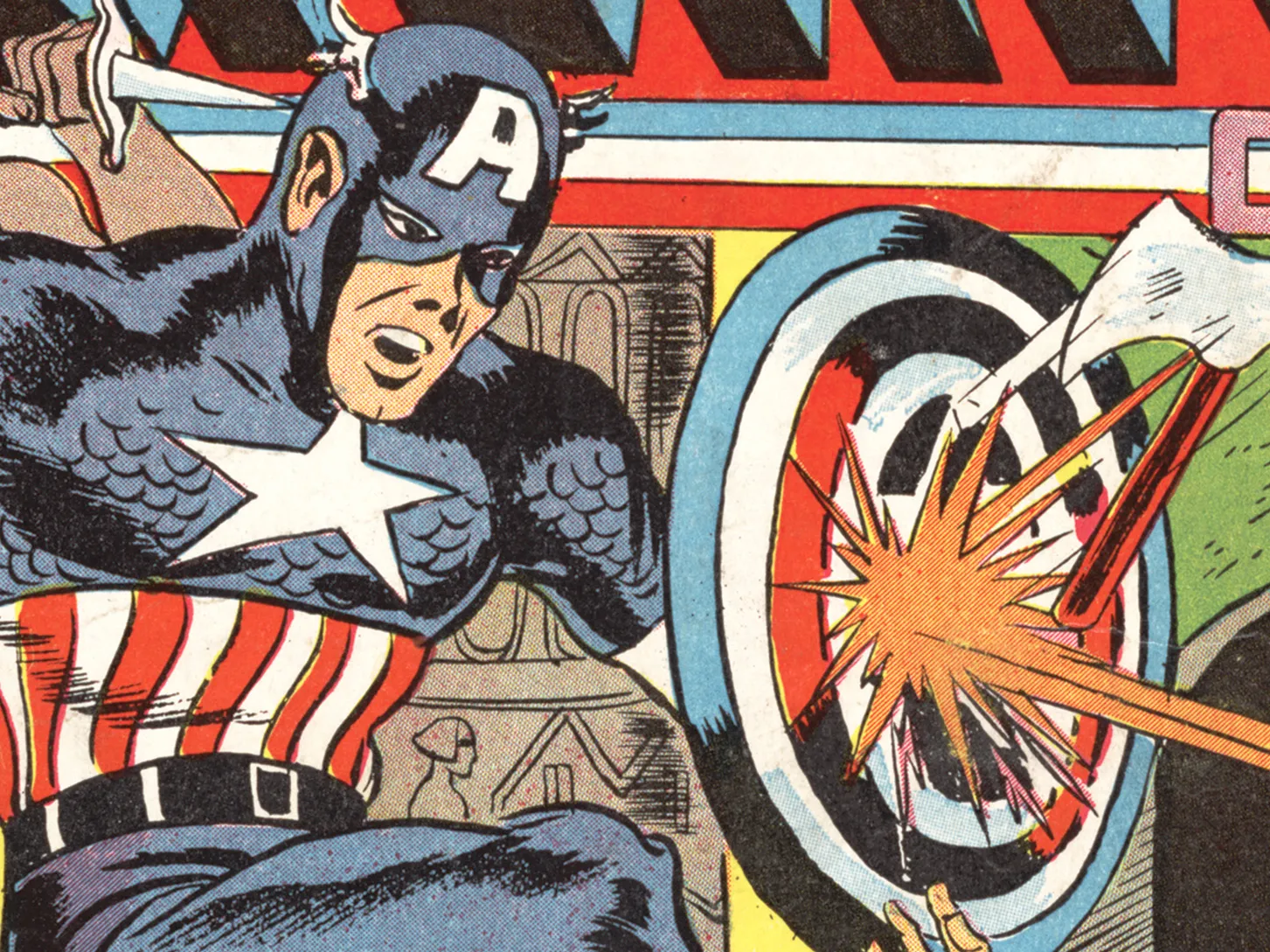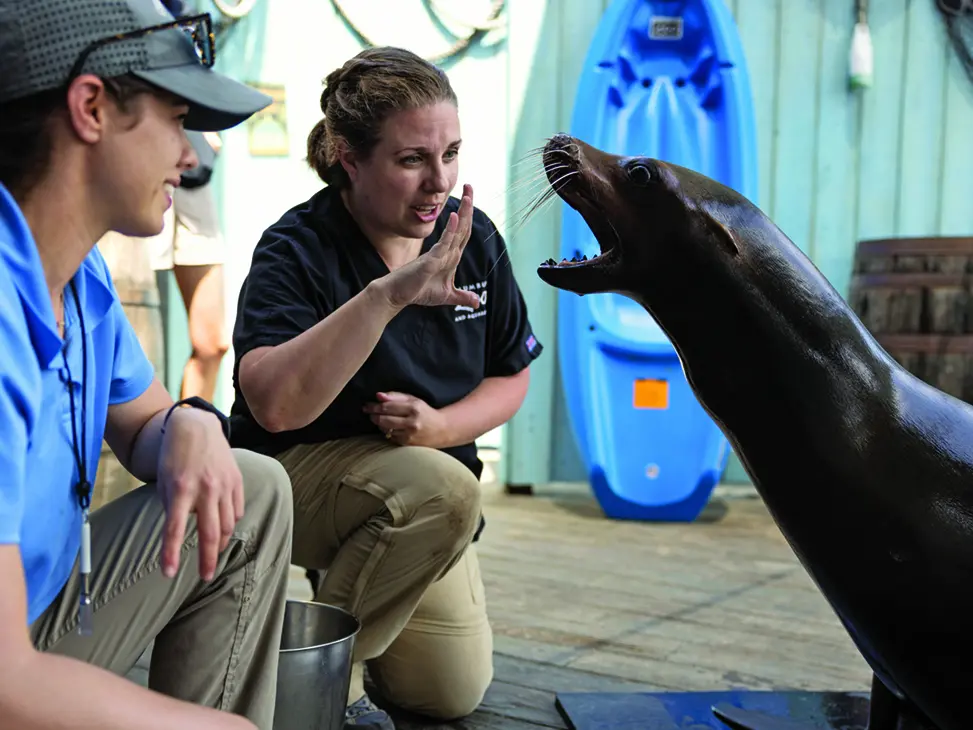10 bonus facts about the 150-year-old Orton museum
Director Loren Babcock reveals some very cool things about Buckeyes’ favorite fossil collection—plus some long-ago-made errors hiding in plain sight.

Loren Babcock shows a collection of Orton Geological Museum’s fossil fishes, including several collected by noted paleontologist John Strong Newberry, the state geologist who was instrumental in convincing the Ohio Legislature to build Orton Hall and start the museum at the university. (Photo from Ohio State)
To honor Orton Geological Museum’s 150th anniversary, Ohio State Alumni Magazine sent a team to visit Museum Director Loren Babcock. He’s an earth sciences professor, a noted geologist and an expert on things like trilobites, other multicellular animals of early history, and how prehistoric predators evolved. He’s also the kind of storyteller who makes listeners feel like he’s spilling the tea when he’s sharing history.
Babcock begins the conversation with a deep understatement (“Let me tell you a little bit about the museum”), then dives into a couple of hours jam-packed with fascinating revelations about Ohio State history and the museum’s collection of more than a million rocks, minerals and fossils.
We could fit only a fraction of Babcock’s regaling in the Power of Ten story in our print issue, so consider this a bonus set of 10 cool facts.
The first department at Ohio State was the Department of Geology.
The Orton Geological Museum is in Orton Hall, the Columbus campus’ oldest extant building built by the university. It was authorized one day before Hayes Hall, and when it opened, had no heat, electricity or plumbing, which would have been difficult because the winter of 1892-93 was a brutal one.

Orton Hall was constructed of Ohio building stone, arranged in correct stratigraphic order from Silurian at the base to Carboniferous near the top of the bell tower. The main structure of the building represents the Paleozoic Era.
Orton Geological Museum is the oldest museum in Ohio. Its home is the first building built to house a museum in Ohio.
The museum’s namesake, Edward Orton, was the first faculty member hired for Ohio State, as well as our university’s first president. He’s also the person who made “The” an official part of our name. As for the museum’s moniker, it was named for him after his death in 1899.

Orton, an abolitionist, hired the university’s first Black employee, Washington Townsend, a man who had used the Underground Railroad to escape from a plantation owned by U.S. President Andrew Jackson. For 30 years, Townsend worked with the museum’s collection as caretaker of Orton Hall.
Grace Anne Stewart, who served on Ohio State’s faculty from 1923 to 1954, was the first woman geologist to become a professor at a major university in the United States. Stewart, a Canadian, also was the first woman to earn bachelor’s and master’s degrees in that country, plus the first Canadian woman to earn a PhD in geology.
The most famous of her finds is the Phacops rana milleri—one of the fossils most highly sought by collectors around the world—and Stewart named it in 1927. Today, many use a recombined form of the name, Eldredgeops milleri, but there is a difference of opinion as to whether the amended name is valid.
One of the museum’s most famous pieces, the giant ground sloth, is mounted wrong, paleontologists now think. You see it today in the classic kind of T. rex pose, with front arms in the air and tail on the ground. But it likely walked on all fours, on its giant claws, similar to the way chimpanzees use their knuckles. Its tail would have been in the air, like our pet canines.

The poorly posed ground sloth (Photo by Jodi Miller)
Orton’s ground sloth is made from a mix of real fossilized bones and replicas of others, including ones that still remain buried at the original discovery site. Plans are in the works to dig up the rest. Read more about the skeleton, nicknamed “Jeff,” as well as its ties to Thomas Jefferson, on the museum’s website.
The creatures’ heads that ring the Orton Hall belltower are grotesques depicting Mesozoic Era and Cenozoic Era animals, including reptiles and mammals. But in reality, fossils from these eras had only recently been unearthed and/or weren’t well understood when Orton was being built, so some of the creatures are more conjecture than accurate reflection. See the grotesques in this virtual tour of the Orton Museum, which includes drone footage of the belltower.
What’s in a name?
Loren Babcock helped set the record straight on some creepy, 10-foot-long prehistoric sharks—more like today’s eels than the sharks we know—in another recent development at Orton Geological Museum.



